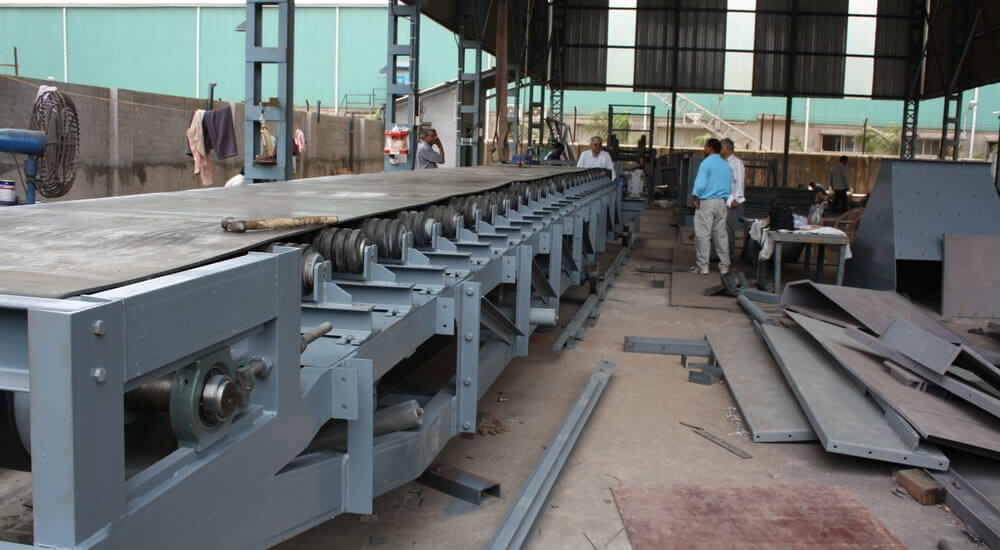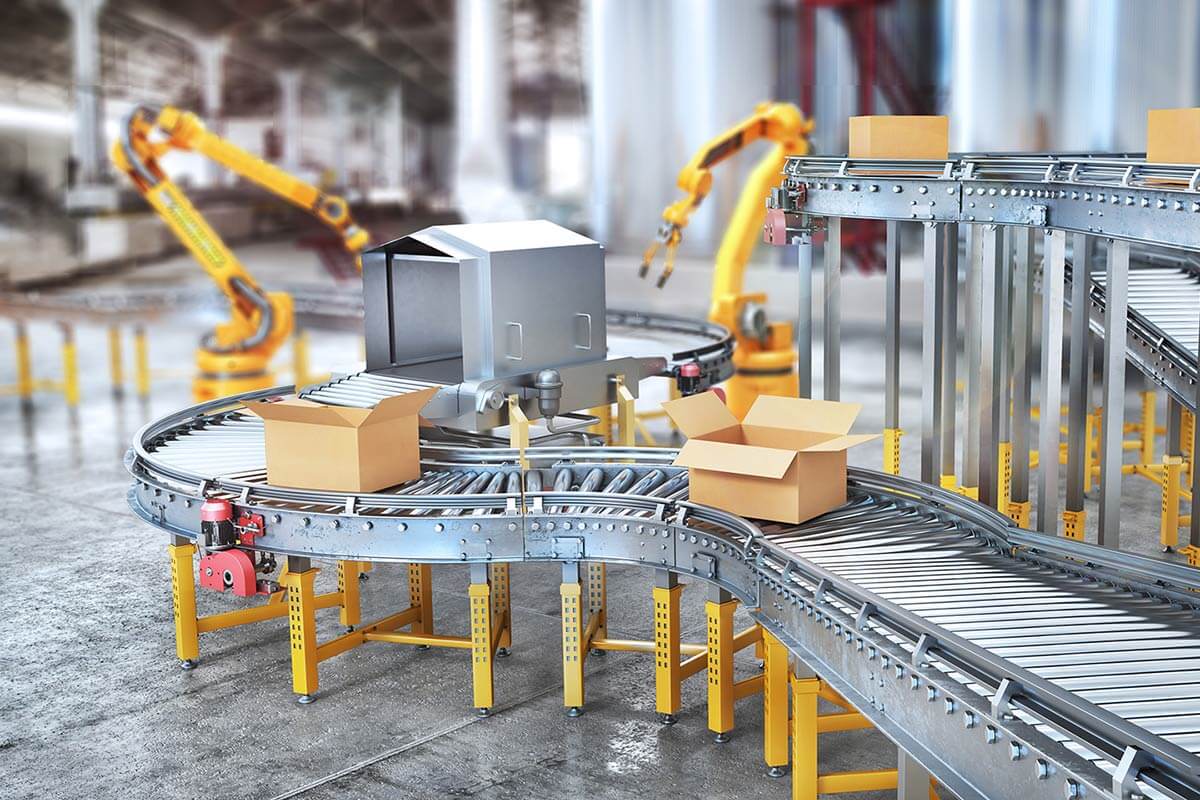Conveyor belt manufacturing
The conveyor belt manufacturing includes two motorized pulleys on which the conveyor material is wound. The conveying medium of the belt conveyor system is one of several conveyor systems available today and is the belt conveyor.
- Home
- Our-services
- Conveyor belt manufacturing
Our Manufacturing services
- Pressure vessel manufacturing
- Atmospheric tank manufacturing
- Heat exchanger manufacturing
- Conveyor belt manufacturing
- Bucket elevator manufacturing
- Storage tank manufacturing
- Chain conveyor manufacturing
- Vibrating screen manufacturing
- Tumbler screen manufacturing
- Gas scrubber tower manufacturing
- Cooling tower manufacturing
- Industrial filter manufacturing
- Ball mill manufacturing
- Crusher manufacturing
- Cooling drum manufacturing
- Drying drum manufacturing
- Reinforced concrete manufacturing
- Steel construction manufacturing
Promotional brochure
Download our catalogue to see specific data about the service we provide and how we work.
Stay in touch!
Please feel free to contact us. We will get back to you within 1-2 business days. Or call us now.
Conveyor belt manufacturing
Each belt conveyor system needs to have different modules to work efficiently and perform the activities required by the belts. Depending on the weight, speed required and flow of items in the conveyor system, various jobs can be different. A belt conveyor system consists of two or more pulleys (also known as drums) connected by an endless loop of conveyor (Conveyor belt manufacturing) that rotates around them and pulls the items it carries. One or more of the driven pulleys will move the belt and the material on the belt forward and through the system.
What is a conveyor belt?
Belt conveyors are the most economical method of transporting bulk materials over short and long distances. Belt conveyors are ideal for transporting large bulk materials because the bulk materials remain fixed on the belt. You can simplify your facility layout and increase efficiency by using belt conveyors.
Conveyor belts are one of the indispensable tools of the material handling sector. These belts, which move continuously to move various materials from one point to another, are usually used for transferring large amounts of material in short periods of time and are also called belt conveyors.
Industrial Conveyor belt manufacturing
Industrial Conveyor belt manufacturing create a continuous loop of conveying flow that rotates around two or more pulleys. In order to operate this system, one or both pulleys usually need to be supported by power. These belts, which are usually made of materials such as rubber, PVC, urethane, neoprene, nylon, nitrile, polyester, are multi-layered. Most belts that carry materials consist of two layers: The lower layer is the carcass, which provides linear strength and shape; the upper layer is usually covered with various rubber or plastic components.
Usage areas of conveyors
Before the widespread use of industrial conveyor belts, manufacturers and suppliers were largely dependent on manual labor. In modern industry-focused projects, these pulleys and belts are preferred. Today, industrial conveyor belts equipped with more advanced techniques are used. These advanced belts are selected according to the needs of the industries. Experts in the material handling sector prefer systems that are suitable for their applications and are safer and more time-saving.
Different Types of Conveyor Belts and Their Usage Areas
1) Conveyor Types According to Working Directions
a) Inclined System Conveyors b) Flat System Conveyors
c) Rotary Conveyor Belts
d) Variable Direction Conveyors
e) Combined Conveyors Offering One or More Options
2) Conveyor Types According to Construction Types
– Those Carrying by Vacuum or Air
– Those Carrying with Rubber or PVC Coated Belts
Those Carried in Roll Form (Plastic, Rubber, Metal, etc.)
– Those Carrying with Chains – Conveyor Systems That Can Continue to Work from the Bottom While the Product is on It
3) Conveyor Types According to the Type of Product to be Carried
– Those Carrying Micro-granular Product in Powder Form
– Those Carrying Substances Such as Stones and Rocks Found in Mines
– Transportation of Food Products That Have Not Yet Been Packaged
Transportation of Granular Product
Frequently asked questions
Industrial equipment is the backbone of a variety of industries, increasing operational efficiency and productivity while supporting quality control. But to do this, such equipment must be reliable, efficient and durable. It all starts with the assembly of high-quality parts.
Experience is key when choosing an equipment provider. Be wary of startups that promise big results but lack the insight and scalability that comes with experience. Our company has been in the industry for over 25 years with 100% equity.
Our company has experience in sulfuric acid plant equipment, phosphoric acid plant equipment, fertilizer factory equipment, ammonia factory equipment, cement factory equipment, sugar factory equipment, oil factory equipment, thermal power plant equipment manufacturing, hydroelectric power plant equipment manufacturing, pharmaceutical factory equipment manufacturing, feed factory equipment manufacturing, chemical factory equipment manufacturing, all types of industrial facility construction and all types of structural steel manufacturing, and we adapt more environmentally friendly and sustainable technologies to our engineering solutions.
In addition to Carbon steel and Stainless steel equipment, we design and manufacture process equipment with different metallurgies such as Hastelloy, Alloy20 and Incoloy.
Although CNC machining is a precision manufacturing method, our local and international quality control procedures ensure that your finished part is to specification and adheres to specified tolerances.
Delivery time varies depending on the type and quantity of equipment or machinery, and usually ranges from weeks to months.





